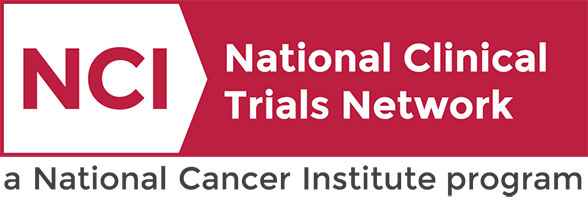Patient Search
 |
 |
|
KaCrole Higgins was diagnosed with breast cancer in 2020. “In May 2020, I found a lump in my breast. I cried. By June, it was diagnosed as breast cancer, triple positive, stage 1A. While getting this cancer diagnosis was devastating, it also became an opportunity. Suddenly, the cancer gave me clarity. It gave me clarity about what was important, what was good in my life, what was toxic in my life, and what I needed to do.” Click below to read more of KaCrole’s story |
If Landon Ryan had been diagnosed with bilateral retinoblastoma 10, 20 or 30 years ago, she might not be here today with nearly perfect vision.Thanks to recent improvements in the treatment for this rare form of cancer that almost exclusively affects children under the age of 5, the diagnosis had the power to change Landon’s life when she was 11 months old, but not to take it — or her eyesight. Click below to learn more about Landon and her story. https://momentum.vicc.org/2022/04/brighter-outlook/ |
Testing the Addition of an Immunotherapy Drug, Cemiplimab (REGN2810), Plus Surgery to the Usual Surgery Alone for Treating Advanced Skin Cancer
Head/Neck
Head/Neck
This phase III trial compares the effect of adding cemiplimab to standard therapy (surgery with or without radiation) versus standard therapy alone in treating patients with stage III/IV squamous cell skin cancer that is able to be removed by surgery (resectable) and that may have come back after a period of improvement (recurrent). The usual treatment for patients with resectable squamous cell skin cancer is the removal of the cancerous tissue (surgery) with or without radiation, which uses high energy x-rays, particles, or radioactive seeds to kill cancer cells and shrink tumors. Immunotherapy with monoclonal antibodies, such as cemiplimab, may help the body's immune system attack the cancer, and may interfere with the ability of tumor cells to grow and spread. Cemiplimab has been approved for the treatment of skin cancer that has spread or that cannot be removed by surgery, but it has not been approved for the treatment of skin cancer than can be removed by surgery. Adding cemiplimab to the usual treatment of surgery with or without radiation may be more effective in treating patients with stage III/IV resectable squamous cell skin cancer than the usual treatment alone.
Head/Neck
III
Choe, Jennifer
NCT06568172
NRGHNHN014
Self-Management for Head and Neck Lymphedema and Fibrosis [PROMISE Trial]
Head/Neck
Head/Neck
The goal of this study is to evaluate the effectiveness of a standardized lymphedema and fibrosis self-management program (LEF-SMP) to improve LEF self-management and reduce LEF-associated symptom burden, functional deficits, and improve quality of life in head and neck cancer (HNC) survivors.
Head/Neck
N/A
Murphy, Barbara
NCT06125743
VICC-EDHAN23569
Cemiplimab for the Treatment of Locally Advanced Head and Neck Basal Cell Carcinoma Before Surgery
Head/Neck
Head/Neck
This phase II trial tests how well cemiplimab works in treating basal cell carcinoma of the head and neck that has spread to nearby tissue or lymph nodes (locally advanced) before surgery (neoadjuvant). Cemiplimab is a human recombinant monoclonal IgG4 antibody that may allow the body's immune system to work against tumor cells. Giving cemiplimab before surgery may make the tumor smaller and make it easier to remove.
Head/Neck
II
Topf, Michael
NCT05929664
VICC-ITHAN23127
Evaluating 111In Panitumumab for Nodal Staging in Head and Neck Cancer
Multiple Cancer Types
This phase I trial tests the safety and effectiveness of indium In 111 panitumumab (111In-panitumumab) for identifying the first lymph nodes to which cancer has spread from the primary tumor (sentinel lymph nodes) in patients with head and neck squamous cell carcinoma (HNSCC) undergoing surgery. The most important factor for survival for many cancer types is the presence of cancer that has spread to the lymph nodes (metastasis). Lymph node metastases in patients with head and neck cancer reduce the 5-year survival by half. Sometimes, the disease is too small to be found on clinical and imaging exams before surgery. 111In-panitumumab is in a class of medications called radioimmunoconjugates. It is composed of a radioactive substance (indium In 111) linked to a monoclonal antibody (panitumumab). Panitumumab binds to EGFR receptors, a receptor that is over-expressed on the surface of many tumor cells and plays a role in tumor cell growth. Once 111In-panitumumab binds to tumor cells, it is able to be seen using an imaging technique called single photon emission computed tomography/computed tomography (SPECT/CT). SPECT/CT can be used to make detailed pictures of the inside of the body and to visualize areas where the radioactive drug has been taken up by the cells. Using 111In-panitumumab with SPECT/CT imaging may improve identification of sentinel lymph nodes in patients with head and neck squamous cell cancer undergoing surgery.
Head/Neck,
Phase I
I
Rosenthal, Eben
NCT05901545
VICC-EDHAN23201P
Testing the Use of Ado-Trastuzumab Emtansine Compared to the Usual Treatment (Chemotherapy With Docetaxel Plus Trastuzumab) or Trastuzumab Deruxtecan for Recurrent, Metastatic, or Unresectable HER2-Expressing Salivary Gland Cancers
Head/Neck
Head/Neck
This phase II trial compares the effect of usual treatment of docetaxel chemotherapy plus trastuzumab, to ado-emtansine (T-DM1) in patients with HER2-postive salivary gland cancer that has come back (recurrent), that has spread from where it first started (primary site) to other places in the body, or cannot be removed by surgery (unresectable). This trial is also testing how well trastuzumab deruxtecan works in treating patients with HER2-low recurrent or metastatic salivary gland cancer. Trastuzumab is a form of targeted therapy because it works by attaching itself to specific molecules (receptors) on the surface of cancer cells, known as HER2 receptors. When trastuzumab attaches to HER2 receptors, the signals that tell the cells to grow are blocked and the cancer cell may be marked for destruction by body's immune system. Trastuzumab emtansine contains trastuzumab, linked to a chemotherapy drug called emtansine. Trastuzumab attaches to HER2 positive cancer cells in a targeted way and delivers emtansine to kill them. Trastuzumab deruxtecan is a monoclonal antibody called traztuzumab, linked to a chemotherapy drug called deruxtecan. Trastuzumab is a form of targeted therapy because it attaches to specific molecules (receptors) on the surface of cancer cells, known as HER2 receptors and delivers deruxtecan to kill them. Docetaxel is in a class of medications called taxanes. It stops cancer cells from growing and dividing and may kill them. Trastuzumab emtansine may work better compared to usual treatment of chemotherapy with docetaxel and trastuzumab or trastuzumab deruxtecan in treating patients with recurrent, metastatic or unresectable salivary gland cancer.
Head/Neck
II
Choe, Jennifer
NCT05408845
NRGHN010
Study of CHS-114 in Participants With Advanced Solid Tumors
Head/Neck
Head/Neck
This is a Phase 1, open-label, first-in-human, dose-escalation and expansion study of CHS-114, a monoclonal antibody that targets CCR8, as a monotherapy in patients with solid tumors.
Head/Neck
I
Choe, Jennifer
NCT05635643
VICC-DTHAN23184P
A Study Evaluating Single-agent Inavolisib and Inavolisib Plus Atezolizumab in PIK3CA-Mutated Cancers
Multiple Cancer Types
The purpose of the study is to assess the safety and efficacy of inavolisib as a single-agent and in combination with atezolizumab in participants with phosphatidylinositol 4,5-bisphosphate 3-kinase catalytic subunit alpha isoform (PIK3CA)-mutated cancers, including previously treated head and neck squamous cell carcinoma (HNSCC).
Head/Neck,
Phase I
I
Choe, Jennifer
NCT06496568
VICCHNP22118
Testing Nivolumab and Ipilimumab Immunotherapy With or Without the Targeted Drug Cabozantinib in Recurrent, Metastatic, or Incurable Nasopharyngeal Cancer
Head/Neck
Head/Neck
This phase II trial tests how well nivolumab and ipilimumab immunotherapy with or without cabozantinib works in treating patients with nasopharyngeal cancer that has come back (after a period of improvement) (recurrent), has spread from where it first started (primary site) to other places in the body (metastatic), or for which no treatment is currently available (incurable). Immunotherapy with monoclonal antibodies, such as nivolumab and ipilimumab, may help the body's immune system attack the cancer, and may interfere with the ability of tumor cells to grow and spread. Cabozantinib is in a class of medications called kinase inhibitors. It works by blocking the action of an abnormal protein that signals cancer cells to multiply. This helps slow or stop the spread of cancer cells. Giving immunotherapy with nivolumab and ipilimumab and targeted therapy with cabozantinib may help shrink and stabilize nasopharyngeal cancer.
Head/Neck
II
Choe, Jennifer
NCT05904080
ALLHNA092105
Testing What Happens When an Immunotherapy Drug (Pembrolizumab) is Given by Itself Compared to the Usual Treatment of Chemotherapy With Radiation After Surgery for Recurrent Head and Neck Squamous Cell Carcinoma
Head/Neck
Head/Neck
This phase II trial studies the effect of pembrolizumab alone compared to the usual approach (chemotherapy \[cisplatin and carboplatin\] plus radiation therapy) after surgery in treating patients with head and neck squamous cell carcinoma that has come back (recurrent) or patients with a second head and neck cancer that is not from metastasis (primary). Radiation therapy uses high energy radiation or protons to kill tumor cells and shrink tumors. Cisplatin is in a class of medications known as platinum-containing compounds. It works by killing, stopping or slowing the growth of cancer cells. Carboplatin is also in a class of medications known as platinum-containing compounds. It works in a way similar to the anticancer drug cisplatin, but may be better tolerated than cisplatin. Carboplatin works by killing, stopping or slowing the growth of cancer cells. Immunotherapy with monoclonal antibodies, such as pembrolizumab, may help the body's immune system attack the cancer and may interfere with the ability of tumor cells to grow and spread. Giving pembrolizumab alone after surgery may work better than the usual approach in shrinking recurrent or primary head and neck squamous cell carcinoma.
Head/Neck
II
Choe, Jennifer
NCT04671667
ECOGHNEA3191
(89Zr Panitumumab) With PET/CT for Diagnosing Metastases in Patients With Head and Neck Squamous Cell Carcinoma
Head/Neck
Head/Neck
The goal of this phase I clinical trial is to evaluate the usefulness of an imaging test (zirconium Zr89 panitumumab \[89Zr panitumumab\]) with positron emission tomography (PET)/computed tomography (CT) for diagnosing the spread of disease from where it first started (primary site) to other places in the body (metastasis) in patients with head and neck squamous cell carcinoma. Traditional PET/CT has a low positive predictive value for diagnosing metastatic disease in head and neck cancer. 89Zr panitumumab is an investigational imaging agent that contains radiolabeled anti-EGFR antibody which is overexpressed in head and neck cancer. The main question this study aims to answer is the sensitivity and specificity of 89Zr panitumumab for the detection of indeterminate metastatic lesions in head and neck cancer.
Participants will receive 89Zr panitumumab infusion and undergo 89Zr panitumumab PET/CT 1 to 5 days after infusion. Participants will otherwise receive standard of care evaluation and treatment for their indeterminate lesions.
Researchers will compare the 89Zr panitumumab to standard of care imaging modalities (magnetic resonance imaging (MRI), CT, and/or PET/CT).
Participants will receive 89Zr panitumumab infusion and undergo 89Zr panitumumab PET/CT 1 to 5 days after infusion. Participants will otherwise receive standard of care evaluation and treatment for their indeterminate lesions.
Researchers will compare the 89Zr panitumumab to standard of care imaging modalities (magnetic resonance imaging (MRI), CT, and/or PET/CT).
Head/Neck
I
Topf, Michael
NCT05747625
VICCHN2279


